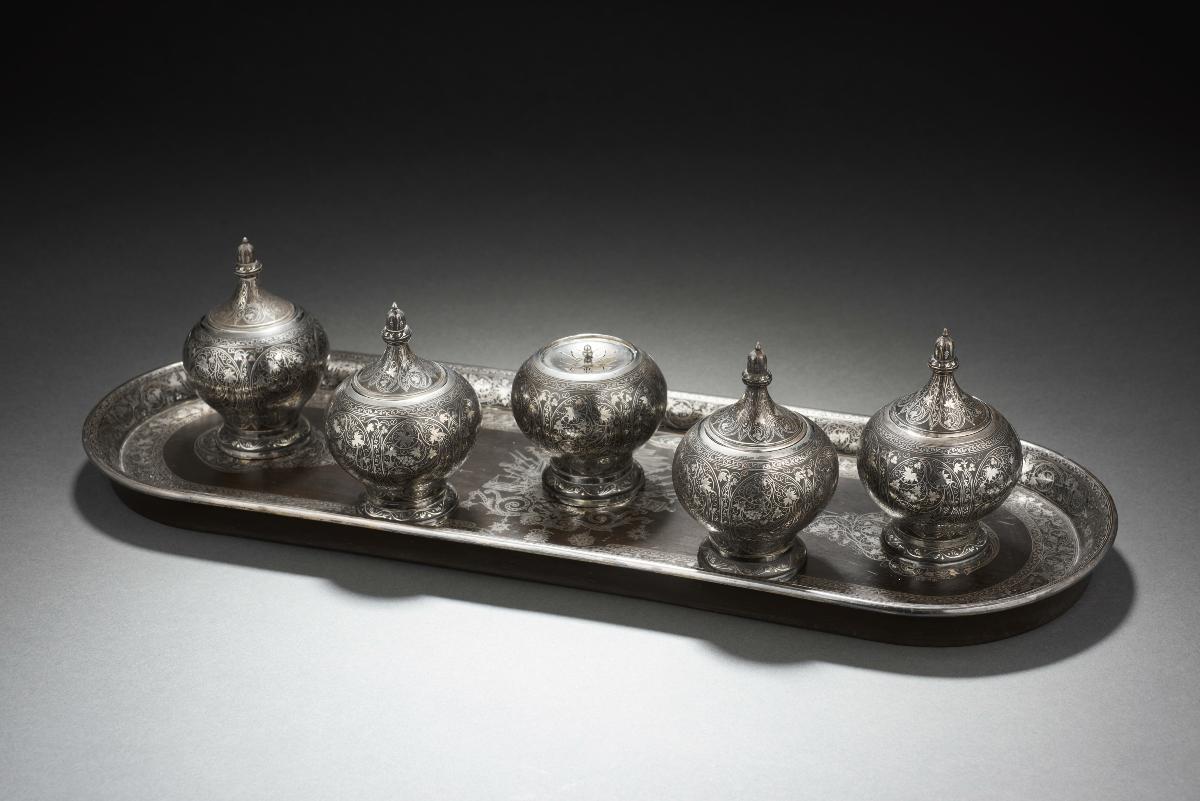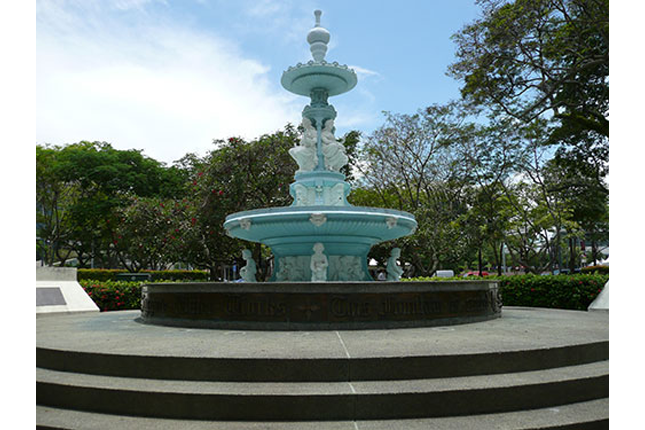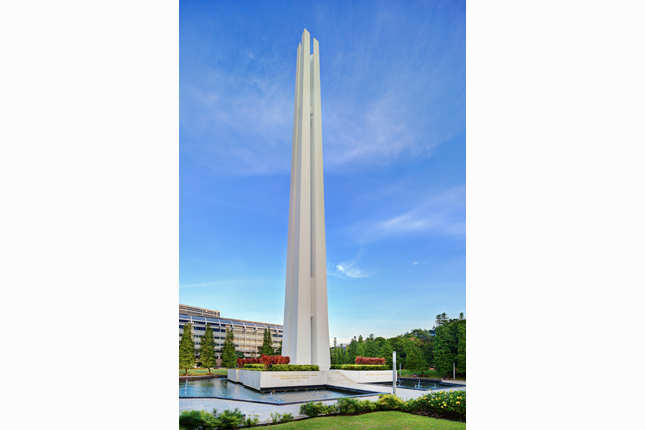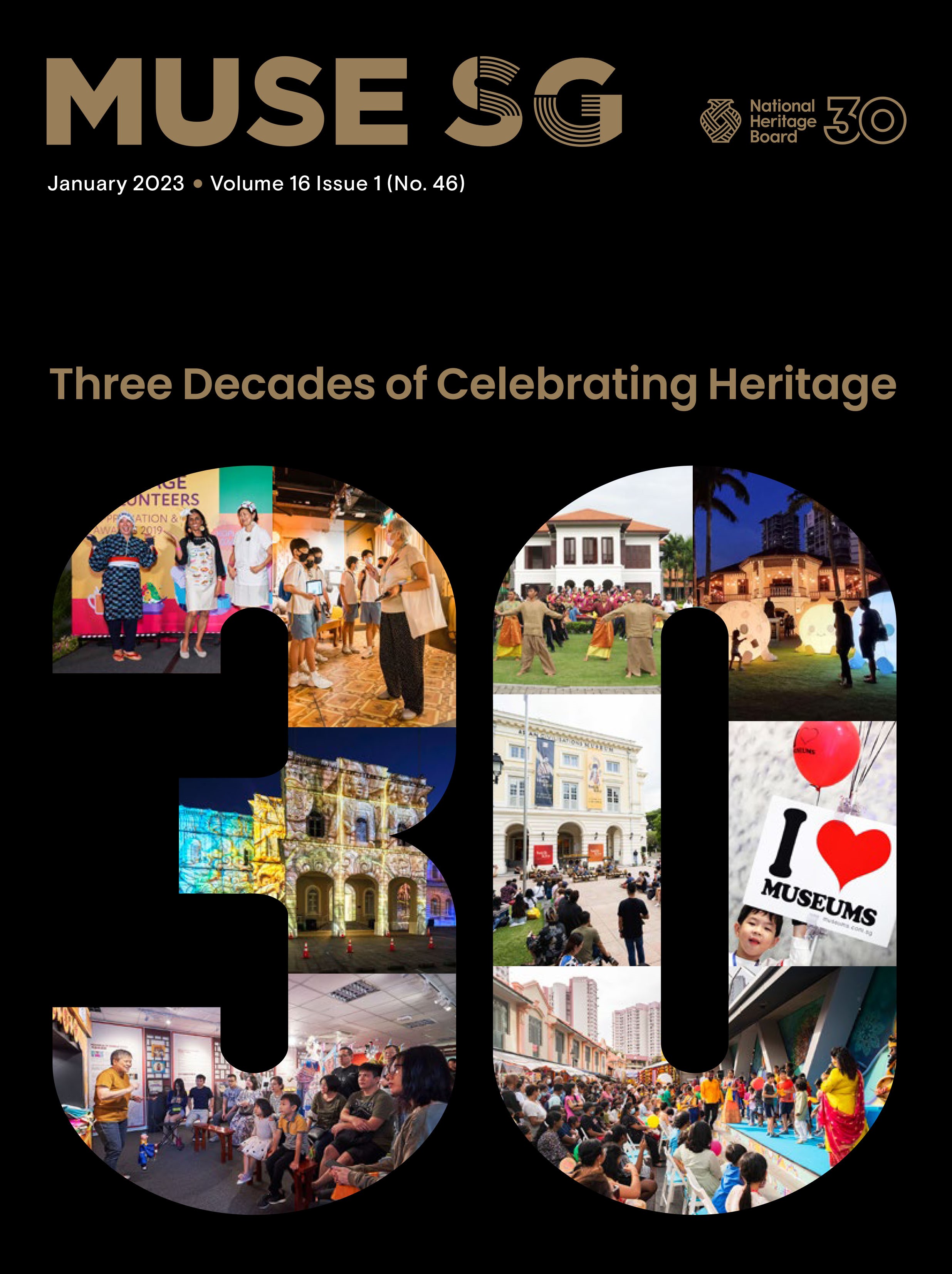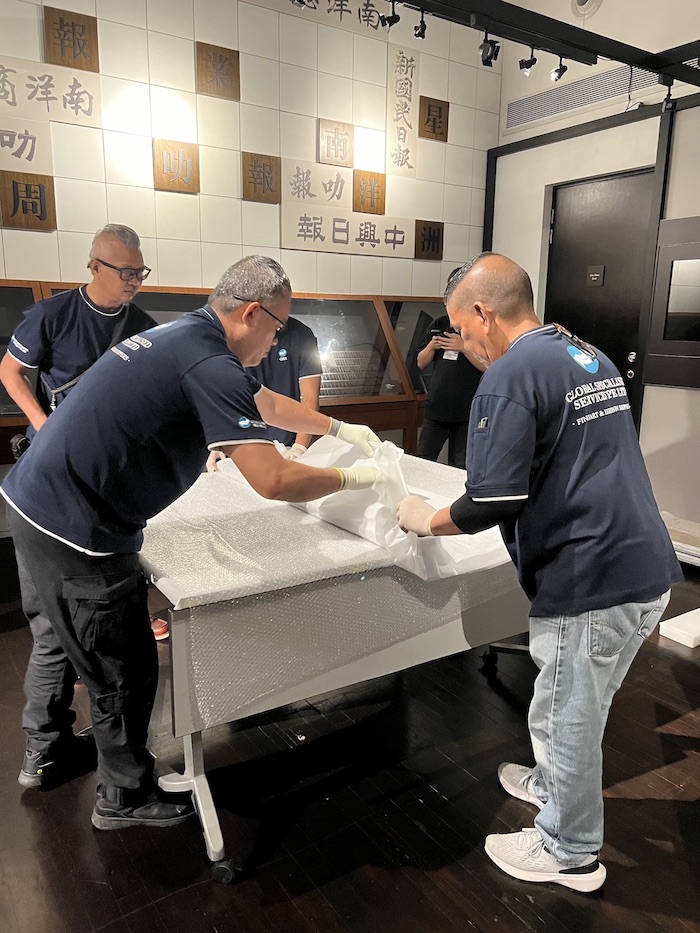Gross measurement: Average inkwell height 11.0 cm,
Object size: 11.5 x 48.3 x 16.2 cm
This exquisite set of calligraphic apparatus comprises four inkwells, a sander or pounce pot and a tray to hold all the receptacles. Multiple inkwells hold different coloured inks while the pounce pot would hold a type of powder to dry ink or sprinkle on rough writing surfaces so that it becomes smooth enough for writing. Of note is the central motif on the tray which is the Ottoman coat of arms fashioned in the European heraldic sense of the 19th century. This design was devised with British assistance as Queen Victoria wanted to decorate Sultan with the Most Noble Order of the Garter in 1856. As protocol dictates, the coat-of-arms of the recipient would be hung on the wall of St George’s Chapel, Windsor Palace. The traditional imperial symbol of every Ottoman sultan was a calligraphic emblem (tughra) which forms the core of this coat of arms. This particular tughra reads “Khan Abdulhamid bin Abdulmecid al-muzaffar daiman” (Khan Abdulhamid, son of Abdulmecid, the always victorious). The Arabic inscription in the crescent under the tughra reads “al-mustanid bi-tawfiqāt al-rabbāniyyah malik aldawlat al-‘uthmāniyyah” (The sultan of the Ottoman state who depends on divine grace and favour).




